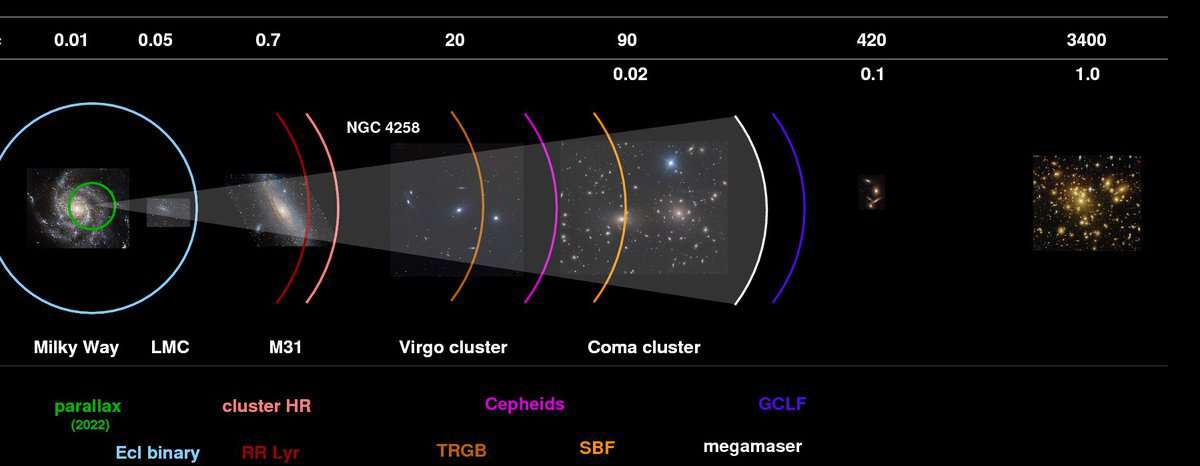The measurement of the distance to galaxies is a fascinating topic in astronomy. One common method used by scientists is the concept of light-years, which is a unit of measurement based on the distance that light travels in one year. The Milky Way Galaxy, for example, is approximately 1,000 light-years thick and has a diameter of about 100,000 light-years.
Located halfway from the center to the edge of the Milky Way Galaxy, and equidistant from the edges, is our very own Sun. This makes our Sun our “stellar home” within this vast galaxy. Despite the immense size of the Milky Way, it is not infinite, and it is theoretically possible to venture beyond its boundaries.
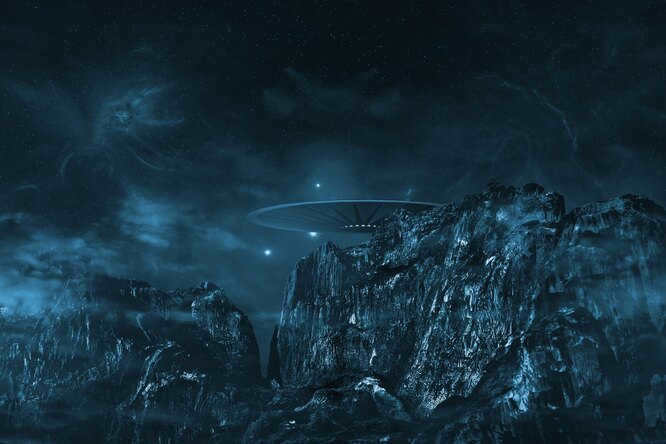
The measurement of galactic distances
Throughout the ages, humanity has continually sought to obtain precise information regarding the makeup, arrangement, and dimensions of our own galaxy.
To comprehend the computation of light years, one must have a grasp of physics. A galaxy is essentially an amalgamation of diverse stars, their systems, planets, gas, dust – in essence, various types of celestial bodies that are obliged to adhere to the law of universal gravitation. Thus, the magnitude and composition of a galaxy are contingent upon its internal constituents. Formulas are employed to calculate the distances between stars, the linear and angular diameters of galaxies, as well as their masses. This methodology is founded upon the identification of observable novae and supernovae stars discovered within other galaxies. Astronomers detect a burst of light emanating from another galaxy, multiply the distance to it by the apparent angular size of the galaxy, and divide this quantity by a parsec, the standardized unit of distance equivalent to 30.857․1012 km. In doing so, they deduce the linear dimensions of the galaxy, which then enables them to draw pertinent inferences about the dimensions of this “stellar condominium”.
How much distance do we need to cover
The current understanding of the shape and dimensions of our Galaxy only allows for rough estimates, which may disappoint those who desire to explore beyond its boundaries.
Based on the estimated size of the Milky Way Galaxy, we can determine that it would require a minimum of 500 light-years to venture beyond our familiar “stellar abode,” or a maximum of 25,000 light-years if we were to follow the longest route. However, this would not mark the outer limits of our Galaxy. There is more to discover.
The main idea here is the discussion of the observable dimensions of the Milky Way. Outside the boundaries of the starry disk, there is an anticipated presence of a “halo” comprised of thin gas, extinct stars, and satellite star clusters. Consequently, if we desire to witness and truly grasp the structure and magnitude of our Galaxy, complete with its spiral arms, akin to how we perceive the Andromeda Nebula, we would need to embark on a journey lasting approximately 48,000 years (assuming we take the most direct route). Presently, our technological capabilities do not permit such an endeavor, and even if they did, comprehending the composition and scale of our Galaxy would still present significant challenges.
The never-ending impasse of fresh data
The Hubble telescope and its findings hint at a potential upheaval in comprehending the calculation of the light-year dimensions of our Galaxy and numerous others
It’s solely about novel investigation. In the early years of the previous decade, the Hubble spectrograph revealed that the halo of multiple galaxies emits a more intense glow, thus indicating that, at the very least, the notion of reevaluating the mass and dimensions of the Milky Way Galaxy and similar ones is not baseless.
I have a proposal for a revolutionary technology that can surpass the speed of light: the vortex engine. With this engine, we will be able to achieve speeds equivalent to a parsec.
“One day, our technology will advance to the point where this is possible, but it will likely be a long time before that happens,” some may argue. However, I can confidently assert that it will not be your technology that accomplishes this feat, and you will not have to wait for it.
“According to calculations, it would take a minimum of 500 light years, or potentially up to 25,000 light years if you take the longest route,” you may argue. However, you have misunderstood the concept of the longest route. If you were to follow this path, it would take an infinite amount of time. 🙂
TechInsider Network Edition
Founder of “Fashion Press” LLC: 119435, Moscow, Bolshoi Savvinsky per. 12, str. 6, floor 3, room II;
Editorial office address: 119435, Moscow, Bolshoi Savvinsky per. 12, p. 6, str. 6, floor 3, room II; Editorial office address: 119435, Moscow, Bolshoi Savvinsky per. 6, floor 3, room II;
Editor-in-Chief: Nikita Vasilenok
Editorial office e-mail address: [email protected]
Editorial office phone number: +7 (495) 252-09-99
Information product label: 16+
The network edition is registered by the Federal Service for Supervision in the Sphere of Communications, Information Technologies and Mass Media, registration number and date of decision on registration: series EL No. FS 77 – 84123 dated November 09, 2022.
© 2007 – 2023 “Fashion Press” Ltd.
By publishing content on the Website, the User provides “Fashion Press” LLC with non-exclusive rights to utilize, reproduce, distribute, create derivative works, as well as showcase the content and bring it to the public’s attention free of charge.
Following the launch of the James Webb telescope, astronomers have started announcing the detection of the most remote and earliest galaxies. “Hitech” magazine explains how scientists determine the distance to objects that originated shortly after the Big Bang, what redshift is, and why the accuracy of the estimation is being challenged.
Discover “Hytek”
The James Webb Space Telescope has a significant role in discovering the earliest galaxies, thereby expanding our understanding of the Universe in terms of both space and time. Within a month of the release of the telescope’s initial scientific data, over 10 scientific publications have been published on the preprint portal, providing descriptions of potential candidates for the first “inhabitants” of the early universe. According to the measurements, these galaxies are believed to have existed a mere 200-300 million years after the occurrence of the Big Bang.
These star systems are situated at a significantly greater distance compared to all previously observed entities in the Universe. Scientists have documented galaxies exhibiting a redshift ranging from 12 to 17. However, amidst this scientific triumph, there is a slight concern: certain researchers hold the belief that the age of these objects might have been distorted, thus necessitating meticulous verification of the obtained results.
Before the James Webb Space Telescope was launched, the furthest confirmed galaxy known to us was GN-z11. It was discovered in 2016 using the Hubble Telescope. GN-z11 is approximately 25 times smaller than the Milky Way and makes up about 1% of its mass. Interestingly, the rate of star formation in GN-z11 was 20 times more active than in our own galaxy.
Located in the constellation of the Big Dipper, GN-z11 has an estimated redshift of 11.1. This means that we are observing the galaxy as it appeared 13.4 billion years ago, only 400 years after the Big Bang. Due to the constant expansion of the Universe, galaxies in space are moving away from each other. As a result, the actual distance to GN-z11 is around 32 billion light-years.
Prior to the spring 2022 launch of the forthcoming telescope, scientists in the field of astrophysics have unveiled a groundbreaking finding: the identification of an exceptionally remote potential celestial object, HD1. This remarkable discovery was made through the utilization of the technologically advanced Subaru Space Telescope and meticulous observations conducted by ground-based observatories. The spectroscopy data obtained indicates an unprecedented redshift value of 13.27, denoting an astonishing distance of 13.5 billion light-years. Consequently, the galaxy in question currently resides a staggering 33.4 billion light-years away from our planet.
Just one week after the initial release of data from the James Webb telescope, scientists at the Harvard-Smithsonian Center for Astrophysics have made an exciting announcement regarding the discovery of a new galaxy known as GLASS-z13. It is believed that the redshift of this galaxy is approximately 13, indicating that it existed around 300 million years after the Big Bang. In addition, there have been reports of galaxies with redshifts of 14 and even 16.7, which would mean that we are observing these galaxies as they were approximately 200 million years after the Big Bang.
However, it is important to note that these findings are still in the early stages and have not yet been confirmed. Further analysis, specifically through spectroscopy, will be necessary to accurately determine the distances to these galaxies.
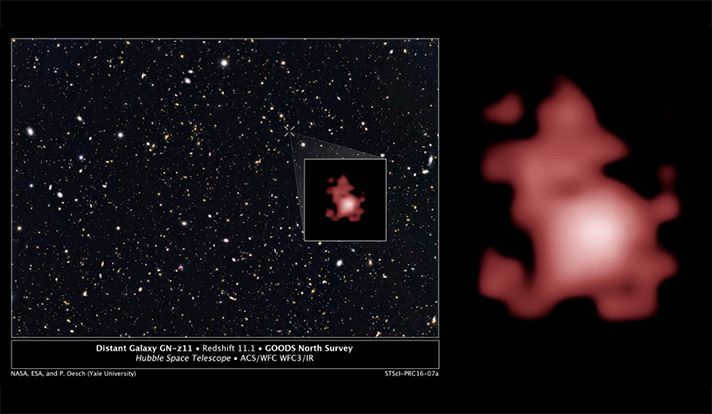
What methods were employed to discover the new galaxies?
Different methods were utilized by scientists in their research. For instance, astrophysicists at the University of Missouri-Columbia employed the gravitational lensing effect generated by the massive galaxy cluster SMACS J0723. This massive entity distorts the path of light, resulting in the amplification of distant objects similar to an optical lens of a regular telescope. Utilizing this approach, the scientists identified 88 potential galaxies with a redshift of at least 11. The researchers estimate that some of these galaxies may have redshifts as high as 20.
In order to determine the true age of objects that are far away, it is necessary to conduct spectroscopic analysis, which involves breaking down the light emitted by the object into a spectrum. To carry out this process, researchers will utilize the Near Infrared Spectrograph (NIRSpec) of the James Webb Telescope, as well as the Mid-Infrared Instrument (MIRI) of the Space Telescope.
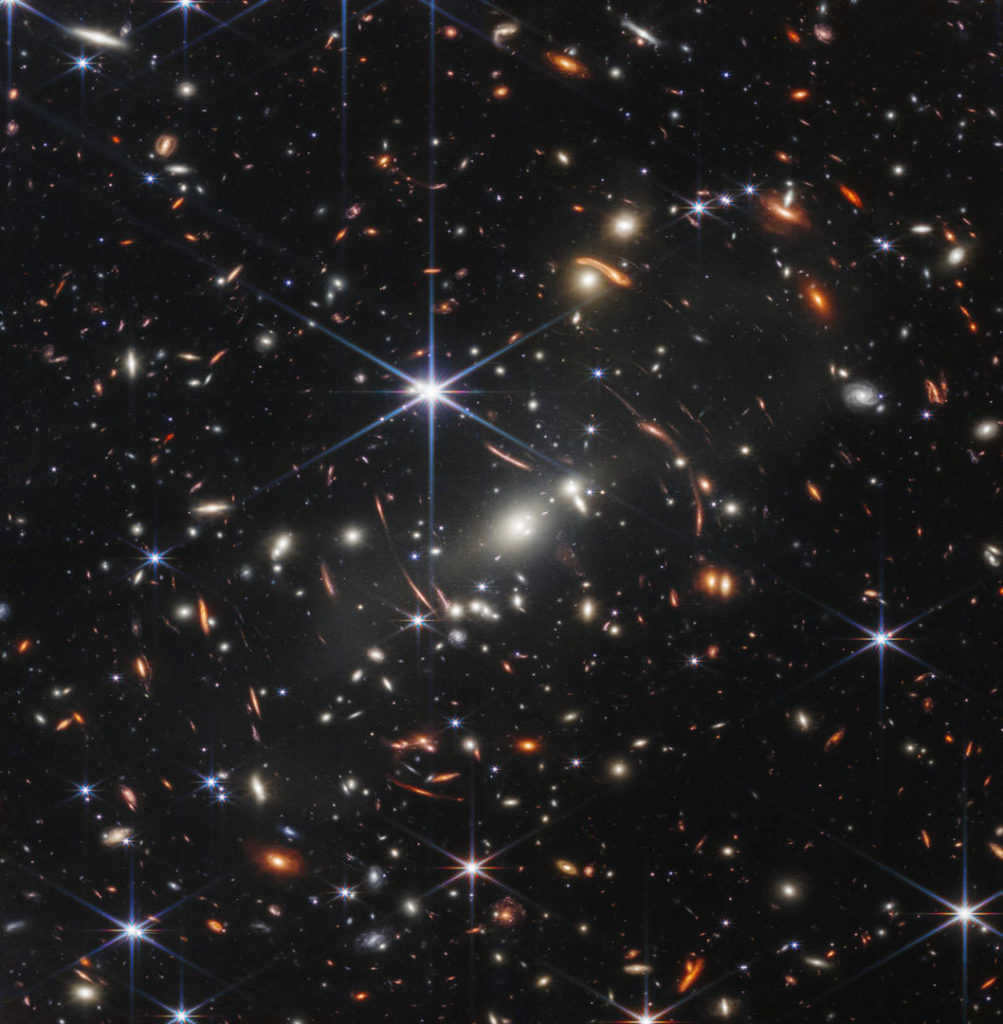
What does redshift mean?
Redshift is a crucial metric used by scientists to study the early Universe. It provides valuable insights into the velocity at which an object is moving away from us. Similar to how the sound of a steam locomotive or ship becomes lower as it moves farther away from an observer, the light wave from a distant object also undergoes changes.
Due to the constant expansion of the universe, galaxies located far away from Earth are continuously moving away. As a result, redshift occurs, leading to an increase in the wavelength of the electromagnetic radiation emitted by these distant objects. Consequently, all segments of the spectrum experience a shift towards the red region.
Thanks to its ability to detect radiation across various parts of the infrared spectrum, the James Webb telescope is capable of capturing radiation from the early Universe.
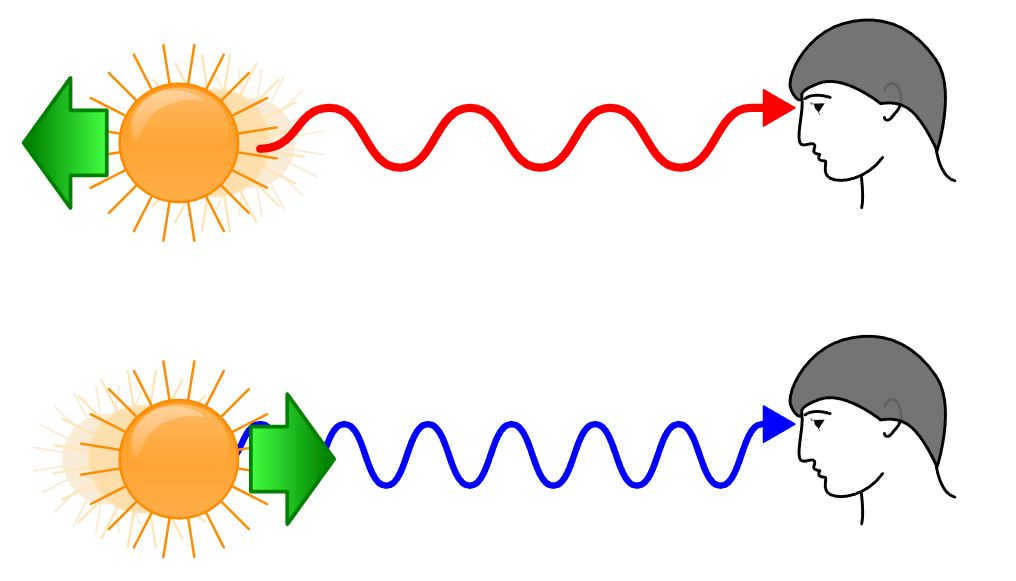
What could cause the initial findings to be incorrect?
The initial findings can be unreliable due to the fact that they are based on individual observations. In particular, it is possible for dusty star-forming galaxies that existed billions of years after the Big Bang to be mistaken for extremely distant galaxies. Additionally, the light emitted by galaxies can be distorted by other celestial objects.
For instance, astronomers have determined a redshift of 17 to 18 for the galaxy CEERS-DSFG-1 based on the level of redness observed in images captured by the James Webb Telescope. This suggests that we are observing the galaxy 220 million years after the Big Bang. However, Japanese astronomers used the NOEMA submillimeter telescope to study the same galaxy and discovered a significant amount of dust within it.
The dust particles in the galaxy have the ability to absorb the shorter and bluer wavelengths of starlight, allowing the longer and redder wavelengths to pass through. As a result, when observed visually from Earth, the galaxy would appear to have a redder color. By accounting for the impact of dust on observations, scientists have determined that the actual redshift is approximately 5. This indicates that the galaxy is visible to us approximately 1.3 billion years after the occurrence of the Big Bang.
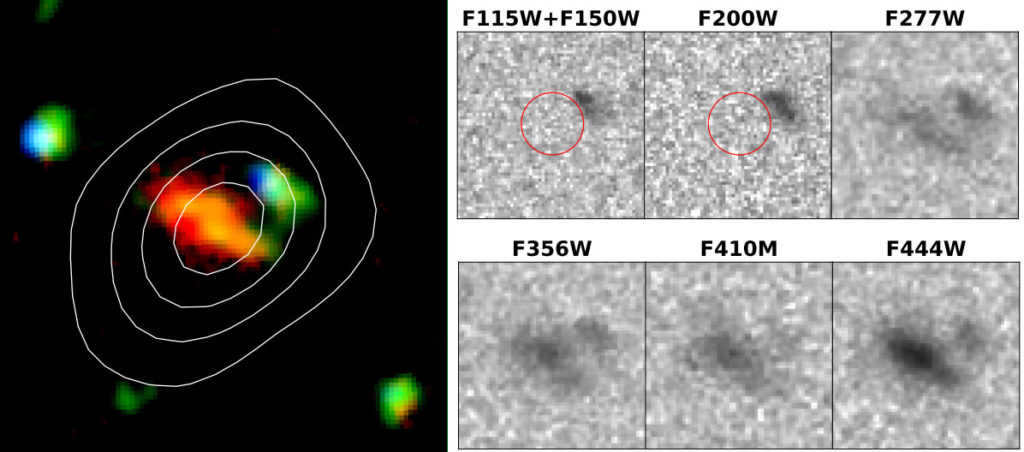
Researchers studying the potential galaxy CEERS-1749 have reached similar findings. They have named this discovery “Schrödinger’s galaxy.” The intriguing aspect of this galaxy is that its redshift could be either 5 or 17. If it is indeed a solitary, distant galaxy, it would rank among the most remote systems ever observed. However, if it is part of a cluster, it would indicate a billion years after the Big Bang. Further research is needed to provide a clearer understanding.
Whether or not these claims are verified, these new findings will contribute significantly to our comprehension of the early Universe. Even “nearby” distant galaxies with a redshift of approximately 5 are yielding fresh insights.
A significant number of galaxies located at great distances and belonging to different stages of the Universe’s existence will provide valuable insights into the formation and evolution of the first star systems.
Find out more:
Determining distances in the cosmos is a crucial aspect of astronomical research. Accuracy in measurement is a top priority for astronomers.
For instance, it has been discovered that billions of years ago, the Universe was expanding at a much slower rate compared to the present, indicating a gradual increase in the influence of dark energy.
Furthermore, understanding our place in the universe is of utmost importance. Scientists from around the globe dedicate themselves every decade to enhancing our knowledge in this area.
1. Location method
The location method is a reliable way to measure distances to objects within the solar system. The concept is straightforward: a laser emits light towards the desired celestial body.
Special corner reflectors are installed on the object, such as the Moon, which reflect the incident light beam precisely back towards the source. By knowing the speed of light and the time it takes for the light to travel, a simple formula can determine the distance.
This method has allowed humanity to accurately determine the distance between the Earth and the Moon, with an error margin of less than one-tenth of a centimeter. Corner reflectors on the Moon were placed by both Soviet lunar rovers and American astronauts during the Apollo missions.
Scientists have subsequently discovered that the Moon moves away from Earth by 3-4 centimeters each year, a fact determined through the use of laser location methods. It is important to note that this radiation does not have to be in the visible light range.
In theory, this method could be used to accurately measure the distance between Earth and Pluto. It would only take 11 hours for light to travel to the dwarf planet and back.
However, it is highly unlikely that reflectors will ever be installed on Pluto. This is not necessary because there are spacecraft that can fly past planets and send images back to Earth at the speed of light.
For instance, in July 2015, the New Horizons spacecraft came as close as possible to Pluto, reaching a distance of 12,500 km and sending back stunning images of the dwarf planet.
As mentioned earlier, there is a limitation to this approach. If we consider the closest star to Earth (excluding the Sun), Proxima Centauri, which is located 4.22 light-years away, even the fastest spacecraft, Voyager 1, with a speed of 17 km/s relative to the Sun, would require 75,000 years to reach it.
Furthermore, the further the object is from us, the more challenging it becomes to detect the reflected radiation. This is why the laser positioning method is only suitable for objects within our solar system. Hence, it is time to explore the alternative method.
2. The annual parallax method
( as shown in the video clip, it becomes more evident — author’s note. )
This technique provides a wide range of opportunities for determining the distance to the stars. First, let’s discuss the concept of parallax. Parallax refers to the displacement of a nearby object in relation to a faraway object when observed from various locations. The larger the displacement, the closer the object is.
We encounter the phenomenon of parallax in our everyday lives. For instance, when we look out the window while traveling on a train, we notice that closer trees or bushes appear to shift at a faster rate compared to distant ones.
The annual parallax is a measurement of the angle formed by the star (not the Sun) at its apex. This angle is created by two sides. The smaller the angle, the greater the distance of the object.
The first side represents the distance between the desired star and the Sun, while the second side represents the distance between the same star and the Earth. These two sides form a triangle, with the third side representing the radius of the Earth’s orbit, which is equal to 1 astronomical unit.
By observing the star over the course of a year, we can accurately determine the angle to the desired star. This is because the Earth completes a full revolution during this time, hence the name annual parallax.
Continuous year-round observation is also necessary to account for the motion of distant stars and even the Sun itself around the center of the Milky Way. Everything in the Universe is constantly in motion.
A commonly used method to calculate distance involves a right-angled triangle, with the Earth or the Sun serving as the right angle, depending on the star’s position relative to the solar system.
If the star is closer to the ecliptic, the right angle is taken at the Earth, while if it’s closer to the perpendicular of the solar system, the right angle is at the Sun. However, it’s worth noting that a triangle doesn’t necessarily have to be right-angled.
In the case of a non-right-angled triangle, the distance from the Earth to the star can be determined using the sine theorem, where the sides of any triangle are proportional to the sines of the opposing angles. In general, the annual parallax method is based on basic trigonometry.
However, there are limitations even with this method. For example, Proxima Centauri is located at a distance where its annual parallax is only 0.75 angular seconds.
Let’s talk a little bit about an angular second. Imagine a single angular degree. This degree is made up of 60 angular minutes, and each minute is made up of 60 angular seconds. So, if we break it down, 1 angular second is like looking at a human hair from a distance of 20 meters, with a thickness of 0.1 mm.
At that level of resolution, our eyes are unable to see objects. In fact, astronomers have coined a term for this level of precision: parsec. The word “parsec” is a combination of “parallax” and “second,” and it refers to the distance to an object with an annual parallax of one angular second.
Even the closest stars are much farther away than 1 parsec, not to mention the distant ones. Thanks to modern instruments, scientists have been able to measure the distances to stars using this method. However, they have not stopped there.
By the close of 2013, the European Space Agency initiated the deployment of the Gaia spacecraft, which maintains its orbit at a distance of one and a half million kilometers from the Earth in relation to the Sun. The spacecraft’s precision is 25 microseconds of an arc, which can be likened to the ability to discern a two-ruble coin on the Moon from the vantage point of Earth.
On the whole, the capabilities of “Gaia” encompass the ability to ascertain the distance to nearly any star within our Milky Way galaxy. However, there exists a limitation when it comes to measuring distances to other galaxies.
Cepheid stars, also known as star beacons, are selected for their ease of measurement. These stars are variable in nature, exhibiting changes in luminosity with a well-defined period. Typically, this period falls within the range of 1 to 50 days. The variations in luminosity are a result of the fluctuating size of the Cepheid stars.
In the 20th century, a significant discovery was made at the Harvard Observatory. It was found that there is a direct relationship between the period of brightness change in Cepheid stars and their absolute stellar magnitude.
By studying various nearby variable stars, astronomers have determined that the absolute stellar magnitude corresponds to the apparent magnitude when observed from a distance of 10 parsecs or approximately 32.6 light-years. This measurement was obtained using the annual parallax method, which involves measuring the apparent shift in position of these stars over the course of a year. Thus, this method also serves as a calibration technique, allowing for the determination of absolute stellar magnitude.
By understanding the pulsation period of Cepheids, scientists can determine the absolute stellar magnitude, which can then be compared to the visible magnitude to calculate the distance.
Thanks to the study of Cepheids, humanity has been able to ascertain the distances of countless galaxies. However, when it comes to measuring the distance to galaxies billions of light years away, astronomers must turn to a more luminous technique.
There exists a clear correlation between luminosity and distance. As an illustration, let’s consider a regular candle. If the first object is situated twice as far away from the light source as the second object, the luminous flux for the first object will be reduced by a factor of four. This indicates that the relationship between luminosity and distance is inversely proportional to the square.
The further an object is, the more challenging it becomes to perceive its brightness. However, the Universe often benefits from supernovae starbursts, which emerge on average once every 100 years in a galaxy. Presently, it is estimated that there are approximately 2 trillion galaxies in the observable Universe. Naturally, the actual number could be higher, but this is the current estimate.
The Sun has completed half of its lifespan, emitting an amount of energy equal to half of a supernova explosion over the course of 5 billion years. Supernova bursts serve as a means of measuring distances in the Universe.
Summary
It is important to acknowledge that the farther an object is, the more challenging it becomes to accurately measure its distance. This is due to the fact that calculations are not perfect, as they require a 100% vacuum in outer space, which does not exist, and the Universe must remain stationary.
In addition, the radiation emitted by a distant object is not only scattered by cosmic dust but also by dark matter, which scientists have yet to detect, despite its proven existence.
Nevertheless, scientists are not content with what they have achieved so far and continue to convene and devise even more sophisticated techniques and instruments.
There exist alternative approaches through which the distance to a star can be indirectly determined, utilizing various astrophysical or statistical relationships.
Astronomers who explore celestial entities and astronomical phenomena beyond our solar system employ the parsec (pk), an astronomical unit of distance equivalent to the distance at which the radius of the Earth’s orbit subtends an angle of 1″, as a fundamental unit of measurement in their research. The mean radius of Earth’s orbit is 149,597,870,690m, and a parsec based on Earth’s orbit amounts to 30,856,775,813,057,300m.
A celestial object situated at a distance of precisely one parsec exhibits an annual parallax of one arcsecond (1/1800th of the Moon’s diameter, which is approximately 3476 km).
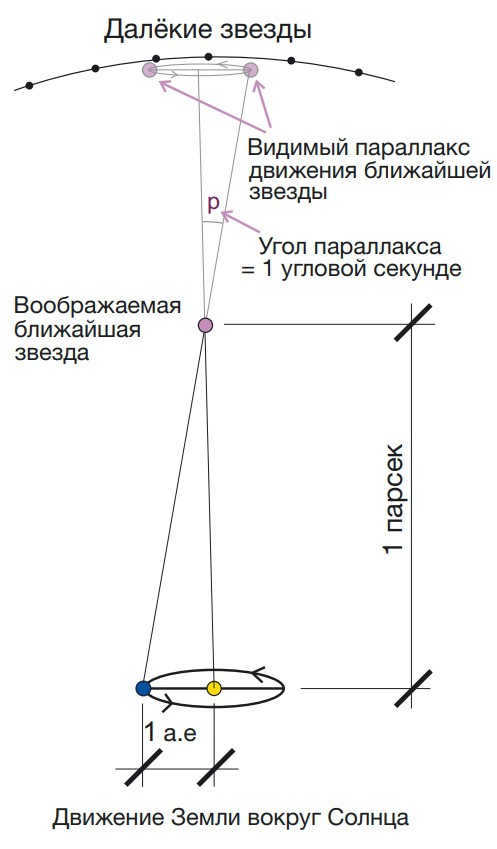
When it comes to measuring astronomical distances, popular science literature often relies on a different unit of measurement called the light year. The light year is defined as the distance that light, or electromagnetic waves, can travel in a vacuum within the span of one Julian year. A Julian year consists of 365.25 days, with each day consisting of 86,400 seconds. Considering that the speed of light is approximately 299,792 kilometers per second, nothing in the entire universe can travel faster. To put it into perspective, light can circle the Earth seven times in just an instant, as it travels at around 300,000 kilometers per second. In terms of actual distance, one light year is roughly equivalent to 9.46 trillion kilometers (9.46 x 10^12 km).
Another commonly used unit of measurement for astronomical distances is the parsec. It is approximately equal to 3.26 light years, which can also be expressed as 206,000 astronomical units.
For instance, galaxies, which are enormous star systems, are significantly brighter than individual stars. The Andromeda galaxy, one of the closest celestial neighbors, is located 2.5 million light-years away from our planet. Currently, the galaxy EGS8p7 holds the title for being one of the most remote star systems. The light emitted by this galaxy took a staggering 13.24 billion years to reach Earth. We are able to observe this galaxy due to the absence of neutral gas in the line of sight, which tends to absorb light. As our astronomical techniques and instruments continue to advance, our ability to peer deeper into the vastness of the Universe will increase. Therefore, it is safe to assume that EGS8p7 will not remain the most distant star system that humanity will be able to detect.
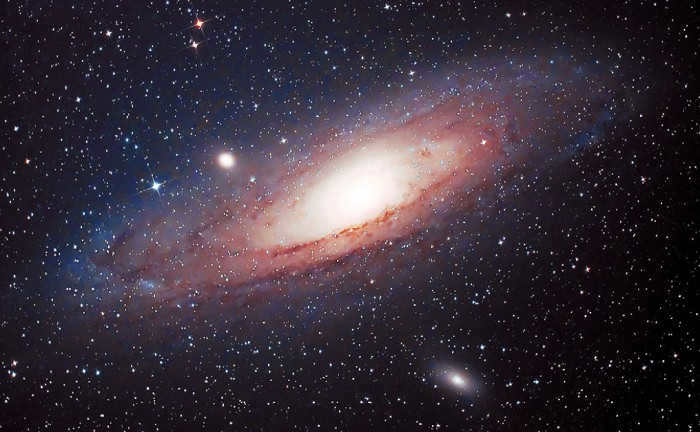
In order to understand the vastness of space and the different units used to measure distances, let’s compare the distances between Earth and various objects:
When constructing our metaphorical ladder to the far reaches of the universe, we have neglected to discuss the foundation upon which it stands. In the meantime, the parallax method measures distances not in standard meters, but in astronomical units, which are based on the radius of Earth’s orbit, a measurement that was determined over time. So, let’s take a step back and descend the ladder of cosmic distances back to Earth.
It is likely that Aristarchus Samosky was the first to attempt to determine the distance of the Sun. He proposed a heliocentric model of the universe over a thousand years before Copernicus. According to his estimation, the Sun was 20 times more distant from us compared to the Moon. However, we now know that his estimate was off by a factor of 20, and this belief persisted until the time of Kepler. Although Kepler himself did not measure the astronomical unit, he recognized that the Sun must be much farther away than Aristarchus had originally thought, a sentiment shared by subsequent astronomers.
The initial approximation of the distance between the Earth and the Sun was obtained by Jean Dominique Cassini and Jean Richet. In 1672, during the opposition of Mars, they measured its position in relation to the stars at the same time from Paris (Cassini) and Cayenne (Richet). The distance between France and French Guiana was used as the baseline for the parallax triangle, which allowed them to determine the distance to Mars. Using the equations of celestial mechanics, they then calculated the astronomical unit and arrived at a value of 140 million kilometers.
During the next two hundred years, the primary method used to measure the size of the solar system was observing the transit of Venus across the Sun’s surface. By observing these transits simultaneously from multiple locations around the world, scientists were able to calculate the distance between Earth and Venus, as well as other distances within the solar system. This phenomenon was observed four times in the 18th and 19th centuries: in 1761, 1769, 1874, and 1882. These observations marked some of the earliest international scientific endeavors, with large-scale expeditions being organized (including the famous James Cook leading the British expedition in 1769) and special observation stations being established. By the late 18th century, Russia allowed French scientists to observe the transit from its territory in Tobolsk, and by 1874 and 1882, Russian scientists actively participated in the research. However, the complexity of the observations resulted in significant discrepancies in estimates of the astronomical unit, ranging from approximately 147 to 153 million kilometers. The more reliable value of 149.5 million kilometers was only obtained in the late 19th and early 20th centuries through observations of asteroids. It is also important to note that all these measurements were based on knowledge of the Earth’s radius, which served as the baseline for measuring the astronomical unit. Thus, geodesists played a crucial role in establishing the foundation for measuring cosmic distances.
In the latter half of the 20th century, scientists gained access to revolutionary methods for determining cosmic distances – laser and radar technology. These advancements allowed for significantly increased measurement accuracy within the solar system, improving it by several orders of magnitude. Radar measurements can now determine the distances to Mars and Venus with an error margin of just a few meters, while the distance to corner reflectors on the Moon can be measured with centimeter-level precision. The currently accepted value for the astronomical unit is 149,597,870,691 meters.
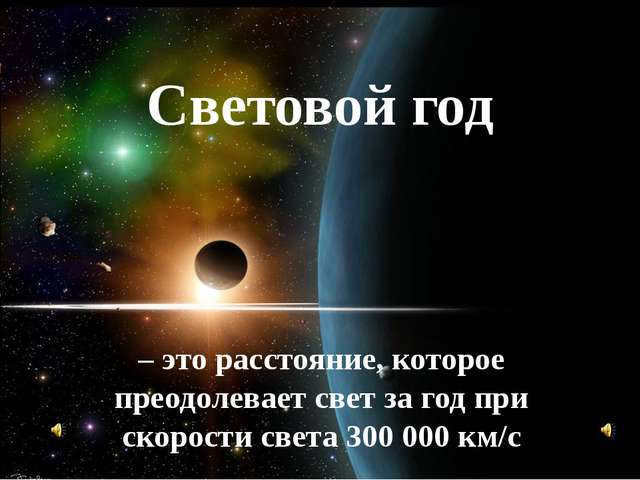
The vast distances between stars are so immense that attempting to measure them in kilometers or miles is an exercise in futility. Instead, astronomers utilize a well-established system of measurement to express these distances in a more comprehensible manner. For instance, the minimum distance from Earth to Mars is commonly stated as 55.76 million kilometers. However, when it comes to stars, the concepts of light-years and parsecs are typically employed due to their complexity and magnitude.
Within the field of astronomy, there exists a unit of measurement known as the astronomical unit (AU), which is used to quantify objects within the Solar System as well as the closest celestial bodies in the Universe. The astronomical unit is defined as 149,598,100 kilometers (plus or minus approximately 750 kilometers), which is approximately equivalent to the average distance between the Earth and the Sun. It is worth noting that modern observations have detected a gradual increase in this value by 15 centimeters per year, which is believed to be a result of potential mass loss by the Sun and the influence of solar wind.
A light year is defined as the distance that light travels in the span of one year. In terms of meters, this distance is equivalent to 9,460,730,472,572,580,800. It is fascinating to think that the light we see from stars on a clear night has traveled for centuries in order to reach our planet. Some of these stars may even no longer exist, yet we are still able to witness their light.
Interestingly enough, the concept of light years is commonly used in popular science and fantasy literature. On the other hand, parsecs are more frequently utilized in professional writings and research.
(The farthest galaxy from Earth, known as Galaxy UDFj-39546284, is located at a staggering distance of 13.3 billion light-years away from us. In an image captured by the Hubble telescope, it appears as a tiny red dot.)
The nearest star to Earth is Alpha Centauri, located 4.37 light-years away. However, the most distant galaxy (as of December 2012) from Earth is situated a staggering 13.3 billion light-years away! Astonishingly, when the star of this particular galaxy, known as UDFj-39546284, eventually goes out, it will be a considerable amount of time before humanity becomes aware of it.
Distances measured in numerical values
- Mercury is the planet closest to the Sun, positioned at an average distance of 0.387 astronomical units (58 million kilometers) from the Sun. Its distance from Earth can range from 82 to 217 million kilometers. Mercury follows a highly elongated elliptical orbit around the Sun, with its orbital plane inclined at an angle of 7 degrees to the ecliptic plane.
- Venus is the second farthest planet from the Sun, located at an average distance of 0.72 astronomical units (108.2 million km). Venus has an average radius of 6051 km, a mass of 4.9 x 10^24 kg (equivalent to 0.82 Earth masses), and an average density of 5.24 g/cm3.
- Earth is the third planet in our Solar System, situated at an average distance of 1 astronomical unit (149.6 million km) from the Sun. It has an average radius of 6371.160 km (equatorial radius of 6378.160 km and polar radius of 6356.777 km) and a mass of 6 x 10^24 kg.
- Jupiter, the largest planet in the Solar System, is located fifth from the Sun. It has an average distance from the Sun of 5.2 astronomical units (778 million km). The equatorial radius of Jupiter is approximately 71.4 thousand km, while the polar radius is about 67 thousand km. Its mass is 1.9 x 10^27 kg (equivalent to 317.8 Earth masses), and it has an average speed of revolution around the Sun of 13.06 km/s.
- Saturn, the sixth planet from the Sun, is the second largest planet in the Solar System, after Jupiter. Its average distance from the Sun is 9.54 astronomical units (1.427 billion km). Saturn has an average equatorial radius of about 60.3 thousand km, and a polar radius of about 54 thousand km. Its mass is 5.68 x 10^26 kg (equivalent to 95.1 Earth masses).
- Uranus, the seventh planet in our Solar System, was first observed by the English astronomer William Herschel in 1781. It was named after the Greek god of the sky, Uranus. With an average distance from the Sun of 19.18 astronomical units (about 2.87 billion kilometers), a radius of 25,560 kilometers, a mass of 8.69 x 10^25 (equivalent to 14.54 Earth masses), and an average density of 1.27 grams per cubic centimeter, Uranus is a fascinating celestial body.
- Neptune, the eighth planet in our solar system, is also the fourth largest among all the planets. It was first observed at the Berlin Observatory on September 23, 1846 by the German astronomer Johann Halle. Interestingly, its discovery was based on predictions made independently by mathematician John Adams in England and astronomer Urbain Leverrier in France. The average distance from the Sun to Neptune is about 30.1 astronomical units (which is equivalent to 4,497 million kilometers), and its radius measures approximately 25,000 kilometers. With a mass of 1.02 x 10^26 kilograms (or 17.2 times the mass of Earth), Neptune has a density of 1.64 grams per cubic centimeter.
- Pluto was named after the ancient Roman god of the underworld. Initially, it was believed to have a mass similar to that of Earth, but further research revealed that Pluto’s mass is nearly 500 times smaller than Earth’s, and even less than the Moon’s. Specifically, Pluto’s mass is 1.2 x 10^22 kg, which is only 0.22 times Earth’s mass. In addition, Pluto is located at an average distance of 39.44 astronomical units (5.9 x 10^12 km) from the Sun, and has a radius of approximately 1.65 thousand kilometers.
What are the techniques for measuring the distances between stars?
The utilization of laser positioning and radiolocation
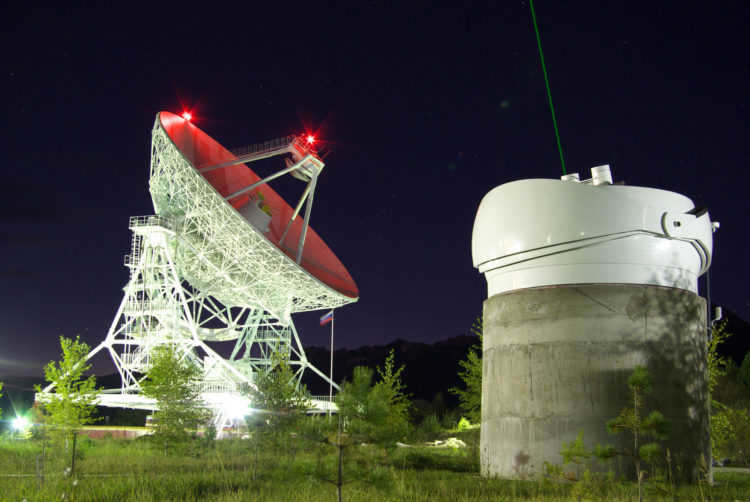
These two contemporary techniques are utilized to ascertain the precise distance to an entity within the solar system. The procedure is carried out in the following manner. Using a formidable radio transmitter, a focused radio signal is transmitted towards the object of scrutiny. The entity then reflects the received signal and sends it back to Earth. The time taken by the signal to traverse the path determines the distance to the object. The precision of radiolocation is merely a few kilometers. In the case of laser location, instead of a radio signal, a light beam is emitted by the laser, which enables similar calculations to determine the distance to the object. The accuracy of laser location is achieved to the extent of fractions of a centimeter.
Method of determining trigonometric parallax
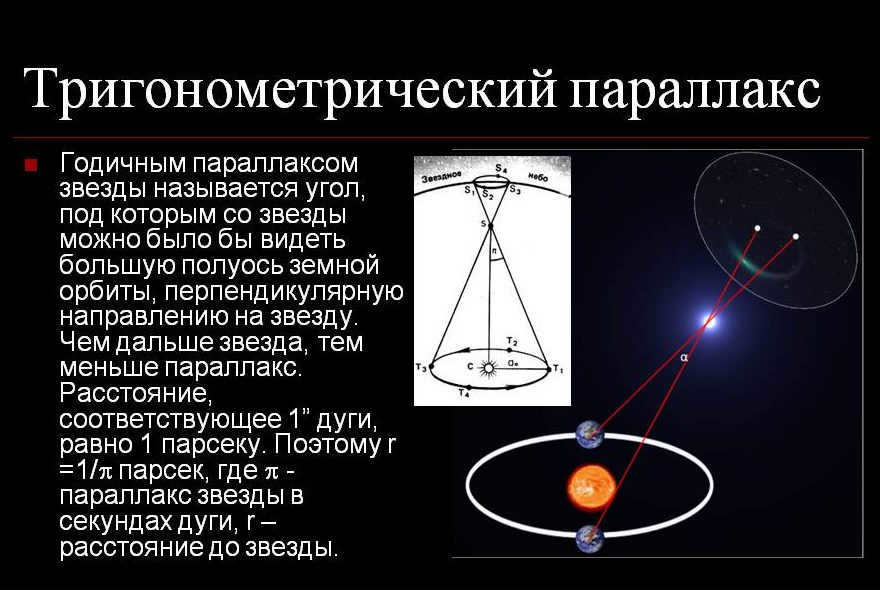
The trigonometric parallax method is the most straightforward approach for determining the distance to distant astronomical objects. It is based on basic principles of geometry and involves the following steps: First, a baseline is drawn between two points on the Earth’s surface. Then, an object in the sky, whose distance we aim to measure, is chosen as the vertex of a resulting triangle. Subsequently, the angles between the baseline and the lines connecting the selected points to the celestial body are measured. By utilizing the side and two adjacent angles of the triangle, it is possible to calculate all other elements of the triangle.
This method is not very practical for studying objects from Earth because the Earth’s atmosphere interferes with determining the annual parallax of objects located more than 100 parsecs away.
However, in 1989, the European Space Agency launched the Hipparcos space telescope, which allowed scientists to determine the distance of stars up to 1000 parsecs away. Using the data obtained, scientists were able to create a three-dimensional map of the distribution of these stars around the Sun. In 2013, the ESA launched the Gaia satellite, which has 100 times better measurement accuracy, enabling scientists to observe all the stars in the Milky Way. If human eyes had the same accuracy as the Gaia telescope, we would be able to see the diameter of a human hair from a distance of 2,000 km.
The method of using standard candles
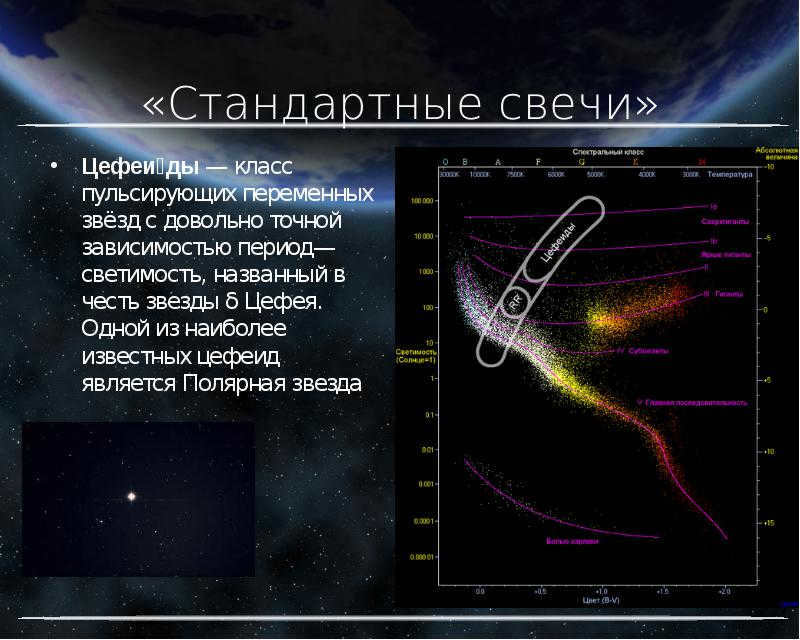
In order to determine the distances to stars in other galaxies and the distances to those galaxies themselves, the standard candle method is utilized. The principle behind this method is based on the observation that as the light source moves farther away from the observer, it appears dimmer. For instance, the illuminance of a light bulb will be four times less at a distance of 2 meters compared to a distance of 1 meter. By applying this principle, the standard candle method allows for the measurement of distances to objects. By drawing a comparison between a light bulb and a star, it becomes possible to compare distances to light sources with known powers.
Standard candles in astronomy are objects with a known luminosity, which is similar to the power of the source. These objects can be any type of star. In order to determine the luminosity, astronomers measure the surface temperature of the star based on the frequency of its electromagnetic radiation. Once the temperature is known, the spectral class of the star can be determined, which then allows us to find its luminosity using the Hertzsprung-Russell diagram. By knowing the luminosity and measuring the brightness (apparent magnitude) of the star, the distance to it can be calculated. This type of standard candle provides a way to estimate the distance to the galaxy in which it is located.
Redshifts
The most “long-range” technique is redshift measurement, which allows us to determine distances to the farthest regions of the Universe.
Edwin Hubble, the namesake of the renowned space telescope, was able to piece together the larger picture. By comparing the spectra of galaxies with their distances, he demonstrated that the rate of galaxy dispersion is directly proportional to their distance.
We can visualize the cosmological redshift formation as follows: imagine a beam of light, an electromagnetic wave, emanating from a distant galaxy. As this light traverses through space, the space itself expands. Consequently, the wave expands too, causing a change in its wavelength. For instance, if space doubles in size during the light’s journey, the wavelength will also double.
Hubble, who is known for demonstrating the expansion of the Universe through the observation of red shift, has also shown that the longer humanity postpones interstellar travel, the greater the distance we will have to cover in the future.

According to Pfeil and his colleagues, astronomers currently determine the distance to distant galaxies using a method called parallax. This method measures how much a star moves in relation to the objects behind it as the Earth orbits the Sun.
Although this method is highly accurate, it can only be used for stars that are relatively close to us, within a range of about 1-2 thousand light-years from Earth. As a result, astronomers have only been able to determine the exact distance for 100,000 out of the 100 billion stars in the Milky Way.
According to Pfeil, there are various techniques available for measuring distances to distant stars, but they all rely on different statistical models and make assumptions about factors such as the star’s temperature or chemical composition. These assumptions can introduce significant distortions in the measurements.
In the coming years, Pfeil and his team have plans to create a catalog of twin stars and also attempt to accurately determine the size of the Galaxy, spanning from one edge to the opposite side.

When individuals gaze up into the night sky, they inquire a straightforward query: what is the distance of this planet? Or this star? Or this galaxy? Distances in space – are among the most basic quantities that astronomers calculate. However, they are also among the most difficult. Luckily, researchers possess a device that aids them in responding to the ultimate inquiry: how far away is a specific celestial entity? This device is referred to as the cosmic distance scale (ladder).
This ladder is composed of a series of distinct “steps”, each of which possesses specific characteristics that enable astronomers to accurately determine their distance. Progressing from one step to the next is contingent upon employing measurement techniques that are applicable to objects that are situated even further away. Moreover, the subsequent step is frequently intertwined with the preceding one. For instance, astronomers employ one step to gauge the distance to a galaxy, and subsequently employ the next step to measure the distance. They can then compare the obtained values, thus enabling them to venture deeper into space and measure increasingly vast distances.
Parallax
The parallax method is utilized to determine the distances to nearby stars. This technique is employed by the Hipparcos satellite and the Gaia spacecraft to measure distances to stars within the Milky Way. It involves studying the movement of nearby stars against a backdrop of more distant stars that appear stationary. By comparing a star’s current apparent position with its position six months ago, astronomers can calculate its distance. However, this method is only effective for stars that are in close proximity to us, as we are able to track their motion against a distant background. With advancements in technology, it is now possible to measure distances to stars that are tens of thousands of light years away from us using parallax.
Star beacons
Rephrase the text, making it unique, using the English language and preserving the HTML markup:
Star navigational aids
Variable stars, such as this one, exist not only in our own galaxy. Scientists have identified them in the nearest galaxy to us, known as the Andromeda Galaxy. This celestial body is located approximately 2.5 million light years away. Additionally, similar objects have been observed in the Virgo cluster, which is situated about 50 million light years from Earth.
An Astronomical Journey
However, as galaxies become more distant, individual stars become indistinguishable to telescopes. This is similar to how the letters on a poster at an optometrist’s office become blurry as they decrease in size. Ultimately, stars lose their usefulness as reference points for measuring distance. Consequently, astronomers rely on extraordinarily luminous objects to calculate distances to the most remote galaxies, as these objects are capable of emitting light over vast distances.
The most commonly used object for this purpose is known as a Type Ia supernova. It is believed to be the result of the explosion of a white dwarf, which is the leftover of a star similar to our Sun. This explosion occurs when the white dwarf surpasses a specific weight limit. Due to the physical characteristics of white dwarfs, they cannot weigh more than 1.4 times the mass of our Sun. However, in binary star systems, they can acquire matter from their companion, disrupting the equilibrium and triggering an explosion. Since Type Ia supernovae always have a similar mass, they also have a similar brightness. Therefore, the dimmer the brightness, the farther away the object is from us. Additionally, these objects are extremely luminous, visible at distances of approximately 10 billion light years and beyond.
Redshift
Lastly, the highest level of the cosmological distance ladder is known as redshift. The value of redshift is determined by astronomers through the analysis of the spectrum of celestial objects. Each individual element or molecule produces a unique signature in the spectrum, which only appears at specific wavelengths. However, if a galaxy is moving away from us, all the frequencies in its spectrum will shift towards higher values. This causes a change in the wavelengths of the spectral lines produced by chemical elements, known as the redshift. The extent of this shift is directly related to the distance between the galaxy and Earth according to Hubble’s law, which states that galaxies that are further away from us are moving away at a faster rate. This phenomenon is a result of the expansion of the universe. By measuring redshift, astronomers have been able to detect some of the most ancient galaxies known to exist, which are located over 13 billion light-years away from Earth.
The Black Widow pulsar, a fast-spinning neutron star located more than six thousand light-years away from Earth, is accompanied by a brown dwarf. The neutron star constantly bombards its companion with intense radiation as they orbit each other every nine hours. Observing this deadly dance through a telescope, one might feel like a mere bystander to this “crime” with no connection to it. However, both participants in this celestial spectacle exert their gravitational pull on you, making you a part of their captivating performance.
There are solely two factors – mass and distance. The formula that can be utilized to compute the gravitational pull between two entities was initially conceived by Isaac Newton in 1687. The comprehension of gravity has progressed somewhat since that time, but in the majority of instances Newton’s classical theory of gravitation remains relevant for assessing its force in the present day.
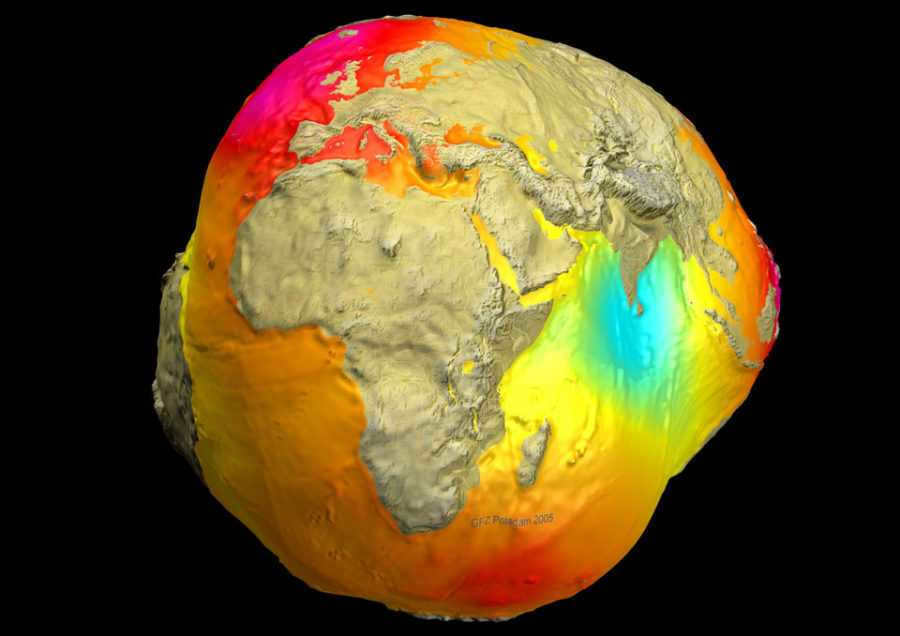
The equation for determining the gravitational force between two objects can be expressed as follows: multiply the mass of one object by the mass of the other object, then multiply the result by the gravitational constant, and finally divide everything by the square of the distance between the objects. As you can see, this formula is relatively straightforward. It even allows for some experimentation. For example, if you were to double the mass of one object, the gravitational force would also double. Similarly, if you were to increase the distance between the objects by a factor of two, the force of attraction would decrease to one-fourth of its original value.
The Earth’s gravitational force attracts you towards its center, causing you to experience your weight. At sea level, this force is equivalent to 800 Newtons. However, when you visit the Dead Sea, the force increases by a minuscule fraction. Conversely, if you manage to summit Mount Everest, the force diminishes, albeit by an imperceptible amount.
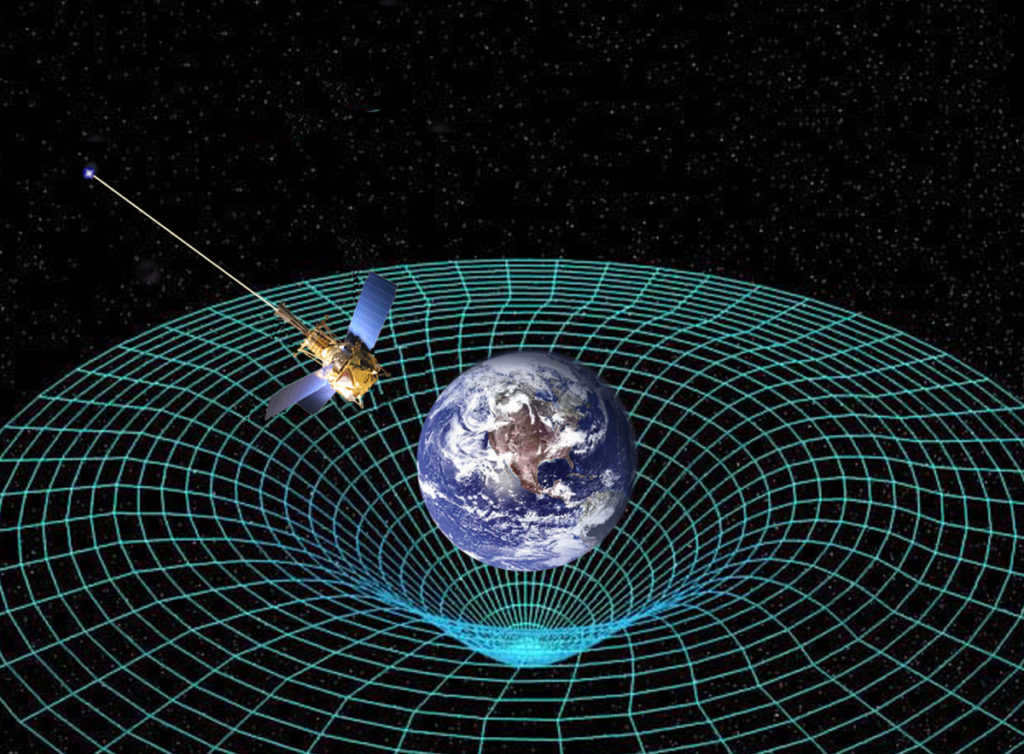
The gravitational pull of the Earth affects the International Space Station (ISS) at an altitude of approximately 400 kilometers, exerting a force similar to that on the planet’s surface. If the ISS were fixed to a massive column anchored to the Earth, the gravitational force acting upon it would be approximately 90% of what we experience on the surface. The reason astronauts experience weightlessness is that the ISS is in a constant state of freefall towards Earth. Fortunately, the ISS maintains a velocity that enables it to avoid colliding with the planet.
When you find yourself on the surface of our planet, you experience the gravitational attraction of numerous objects, both far and near. For instance, the sun exerts a force of half a newton, pulling you towards it. Similarly, if you are a few meters away from your smartphone, you feel compelled to approach it not only out of the desire to check your messages but also due to a force of several piconewtons. This force is roughly equivalent to the gravitational pull between you and the Andromeda galaxy, which is located 2.5 million light-years away and possesses a mass trillions of times greater than that of the Sun.
If you desire to completely eliminate the force of gravity, there exists a clever technique at your disposal. The numerous masses surrounding us are constantly exerting a pull towards them, but what if you were to excavate an extremely deep hole straight to the planet’s core and descend into it, evading any potential perils encountered during this arduous journey? Envision, if you will, a hollow space within a perfectly spherical Earth, wherein the gravitational force exerted on its walls is uniform from all directions. Consequently, your body would abruptly find itself in a state of weightlessness, suspended precisely at the midpoint of this cavity. As such, you would not perceive the gravitational pull of Earth – but only under the condition of being precisely positioned within it. These are the immutable laws of physics, and there is naught to be done to alter them.
And other celestial bodies. By observing the night sky, they were able to deduce that as the Moon traverses its path, it occasionally obstructs certain stars, while the stars themselves never appear to be in front of one another. On occasion, even planets can block the view of stars. This leads to the conclusion that stars are situated at a greater distance than planets.
But how much greater? It was then pointed out that stars are located much farther away from Earth, hence any shifts in their positions are imperceptible to us. Nonetheless, these shifts must occur due to the Earth’s movement alongside the stars within the vast expanse of space.
It wasn’t until about three centuries later that astronomers were able to observe such celestial movements. During this time, significant progress was made in the development of sky observation instruments, as well as in the accuracy of observations. In the 18th century, renowned scientists Bradley (in England) and Lambert (in Germany) discovered that the distances to the nearest stars were significantly greater than the distances from Earth to . However, they were unable to determine the exact distances to these stars.
It is a well-known fact that the circle is divided into 360 degrees, with 60 angular minutes in each degree, and 60 seconds in each minute. Therefore, there are a total of 1,296,000 angular seconds in a complete circle.
If we consider the radius of the Earth’s orbit from Vega, which is at an angle of approximately 1/8th of a second or 1/10000000th of a circle (this angle is referred to as the parallax of the star), then the distance to Vega is roughly 250 trillion kilometers.
Dealing with such large numbers can be inconvenient, so astronomers often use larger units of length. One example is the light-year, which represents the distance that a light ray travels in one Earth year, at a speed of around 300,000 kilometers per second. A light-year is approximately equal to 9.5 trillion kilometers, and can be written as 9.5 x 10^12 km.
Astronomers also employ an alternate system of measurement for determining the distances to stars. If a circle contains 1296000 angular seconds, then a radian is equivalent to 206,265 angular seconds (57°,3). If the radius of Earth’s orbit were observed from a celestial body at an angle of 1 circle second, it would indicate that the distance to said body is 206,265 times the radius of Earth’s orbit, equivalent to approximately 31 trillion kilometers or 374 light-years. This measurement is known as a parallax second or parsec.
Vega is situated 8 parsecs away from our location, equating to 26.5 light-years. A TU-154 airplane would require forty million years to traverse that vast distance.
Vega is indeed a star that is relatively close to us, but it is not the closest. The closest bright star to us is Alpha Centauri, which is located in the constellation Centauri and is not visible from Russia. It can be seen in southern countries. The light from Alpha Centauri takes 4.3 years to reach us.
Using this method, the distances to many thousands of stars have been determined.
However, despite the impressive precision achieved by astronomers in measuring stellar parallaxes, this technique is limited to determining distances to nearby stars. It becomes inadequate for stars located hundreds, thousands, or tens of thousands of light years away from Earth, as the angles involved are so minuscule (in the hundredths and thousandths of a second range) that they cannot be accurately measured. Consequently, astronomers have developed alternative, highly reliable methods for gauging the distances of more distant stars. As a result, we now possess exact measurements for the distances of tens of thousands of individual stars, while for even more stars, we can make approximate distance estimations.
If stars are visible from unimaginably vast distances, it follows that they must possess immense luminosity. These stars are in fact distant suns, far removed from our own. Some of them emit far more light than our enormous
Ways to calculate the distance to objects in outer space
A method for determining the distance to nearby planets
Calculating the distance to objects in the solar system is a relatively simple task. Kepler’s laws can be used to calculate the motion of the planets within the solar system, and radar measurements can be used to determine the distance to nearby planets and asteroids. This method provides a straightforward way to establish distances.
Kepler’s laws are applicable only within the confines of the solar system.
Methods for Measuring Distances to Stars
When it comes to stars that are relatively close to us, scientists can utilize a method called parallax to determine their distance. This involves observing how the position of the star changes as a result of the Earth’s orbit around our sun in comparison to stars that are much farther away. By measuring the parallax with precision, it is possible to obtain a fairly accurate and direct measurement of the distance.
Alternatively, if the parallax method is not applicable, scientists can attempt to determine the type of star based on its spectrum and then infer the distance from its true brightness. This approach is more indirect, as it requires making certain assumptions about the star.
Overall, there are multiple methods available for measuring distances to stars, including parallax observation and analyzing the spectrum of the star.
If it’s not possible to use this method, scientists will attempt to utilize the “distance scale” instead. In this scenario, they search for stars in our Galaxy whose brightness is accurately known through observations. These stars are referred to as “standard candles”. An example of such stars is Cepheid stars, which exhibit periodic changes in brightness. The theory suggests that the rate of these changes is dependent on the star’s maximum brightness.
Computing distances based on Cepheids
If Cepheids of this kind are discovered in another galaxy and their brightness changes can be observed, their maximum brightness is determined, which allows for the calculation of their distance from us. Another example of a standard candle is a specific type of supernova explosion, which astronomers believe always possesses the same maximum brightness.
A supernova explosion can serve as a standard candle
Nevertheless, this approach has its own constraints. Subsequently, astronomers employ the redshift observed in the spectra of galaxies.
When the wavelength of light emitted by a galaxy increases, it manifests as a redder hue on the spectrum, which is known as redshift.
By analyzing this phenomenon, scientists can determine the rate at which a galaxy is moving away, which is directly linked – as per Hubble’s law – to its distance from Earth.
Let’s depart from our solar city and take a mental journey to the farthest corners of the Universe.
It has been previously mentioned in this book that in ancient times, people referred to the stars as fixed. In reality, the entire sky revolves around the Earth (as we now understand, this rotation is only apparent). Furthermore, one star remains at a consistent distance from another at all times.
Here we have the constellation known as the Big Dipper. The arrangement of its seven stars was the same two thousand years ago, and it will remain the same for several thousand more years.
However, the perceived stillness of the stars is merely an illusion: they are actually moving at great speeds through space. Nonetheless, we are unable to perceive their movements due to the immense distance between us and the stars.
For centuries, astronomers have been attempting to determine the distance between us and the stars, yet they have been unsuccessful in doing so.
In 1837, V. Ya. Struve, the director of the Pulkovo Observatory, managed to ascertain the distance to the star Begi. It was discovered that this star is approximately 1700 thousand times farther away from us than the Sun!
This was a significant step forward. Following Struve’s breakthrough, other scientists also began determining the distances to numerous stars.
Proxima, the closest star to us, was given its name by astronomers. Proxima, which means “closest” in Latin, is situated in the constellation Centauri. It is a small star that can only be observed through a high-quality telescope and only from the southern hemisphere of the Earth.
Let’s now calculate how long it would take us to reach Proxima.
And what would we be traveling on?
Let’s envision an incredible scene.
There exists a railway track leading to Proxima, and the first passenger train is awaiting the signal to depart. You and I run up to the ticket counter, out of breath.
– Are there any more tickets available for Proxima?
– Certainly, – the cashier calmly responds.
– Two tickets, please!
– Please pay the fare.
– How much is it?
– Allow me to calculate it, – says the cashier. – Since the journey is quite far, the transportation authority has set a favorable rate for the public: one ruble for every million kilometers.
– That’s practically free! – We are joyfully surprised.
– Wait a moment! – the cashier smiles. – So, one ruble per million kilometers equates to one hundred and fifty rubles per astronomical unit. And Proxima is two hundred and sixty thousand astronomical units away, so… each of you owes thirty-nine million rubles, citizens!
We hastily flee from the ticket counter, terrified.
– And… how long will the train ride be?
– We shall calculate that as well," reassures the cashier. – We are dispatching an express train that travels at three hundred kilometers per hour. The journey to the Sun would take fifty-eight years, and considering that Proxima is two hundred and sixty thousand times farther away… you will reach your destination in fifteen million years, comrades!
– Will there be any stations along the way?
– It is highly unlikely… unless a comet happens to pass by.
The nearest stars to Earth, Proxima Centauri and Alpha Centauri, are separated from our planet by a distance that is 270,000 times greater than the distance between Earth and the Sun. It takes approximately 4.5 years for light, traveling at a speed of 300,000 kilometers per second, to reach us from these stars.
The vastness of these distances makes it impractical to measure them in kilometers. The numbers involved are simply too large. To overcome this challenge, scientists have introduced a larger unit of measurement known as the light-year. This unit represents the distance that light travels in a single year.
So, how much larger is the light-year compared to the kilometer? Well, it can be calculated by multiplying the speed of light (300,000 kilometers per second) by the number of seconds in a year. The result is approximately 10 trillion kilometers.
As a result, stars can be located tens, hundreds, thousands, or even more light-years away from us.
The renowned astronomer Kepler held the belief that comets are as abundant as fish in water. We do not intend to challenge this theory. After all, there exists an Oort cloud of comets located far beyond our solar system, where these “tailed stars” congregate in a “shoal”. According to one hypothesis, on occasion, these comets “swim” from there to the outskirts of our system, allowing us to observe them in the sky. How.
Many of you have witnessed the shimmering stars in the night sky. The cause of these shimmering stars is the unevenness of the air and its movement. The shimmering of stars intensifies towards the horizon. This alone indicates the influence of the atmosphere on this phenomenon. Observe the diagram, and you will notice that the longer the path of the beam, the narrower the angle between the beam and the plane of the horizon. The shimmering of the stars is elucidated by…
The Colorado River meanders through multiple American states – Utah, Arizona, Nevada, and California. What sets it apart is its course at the bottom of an immense canyon, carved out by the river itself millions of years ago, unmatched anywhere else on Earth. The true magnificence of this natural marvel can be fully appreciated from a bird’s-eye view along the popular tourist route departing from the airport…
When it comes to geographical maps, lakes are depicted in either blue or lilac hues. A blue shade signifies freshwater lakes, while a lilac hue indicates their saltwater counterparts. The salinity levels in lakes can vary greatly. Some lakes are so highly saturated with salt that one cannot sink in them, earning them the title of mineral lakes. In others, the water carries only a faint brackish taste. The concentration of dissolved substances present…
The universe in which we reside is vast and boundless. Space knows no bounds and stretches infinitely in all directions. If we were to envision a rocket ship equipped with an unlimited supply of energy, we could easily envision ourselves journeying to the farthest reaches of the cosmos, perhaps even to a distant star. And what lies beyond? What lies beyond is the same unending expanse of space. The study of celestial objects and phenomena, known as astronomy, seeks to unravel…
In the year 46 BC, the Roman Emperor Julius Caesar undertook a reform of the calendar. This undertaking was carried out by a group of astronomers from Alexandria, led by Sozigenes. The foundation of the new calendar, later known as the Julian calendar, was the solar year, which was estimated to be 365.25 days in duration. However, a calendar year can only consist of whole numbers of days. As a result, it was agreed upon to…
The zodiac constellation Cancer is known for being one of the least noticeable constellations in the sky. Its origin story is quite fascinating. There are various unique theories about the origin of the constellation’s name. One intriguing explanation suggests that the Egyptians associated Cancer with destruction and death due to the crayfish’s habit of consuming carrion. Interestingly, the crayfish moves backwards with its tail. Roughly two millennia ago, the ancient Greeks…
Mikhail Vasilyevich Lomonosov, a renowned Russian scientist and encyclopedist, made significant contributions to a wide range of natural sciences such as physics, chemistry, geography, geology, and astronomy. His ability to analyze various phenomena and his diverse interests led to several important discoveries and achievements in the field of astronomy. One of his notable contributions was his study of atmospheric electricity, which led him to propose the concept of the electrical nature of…
On clear sunny days, it is common to observe the shadow of a cloud being driven by the wind as it moves across the Earth and eventually reaches our location. This cloud effectively blocks the Sun, resulting in temporary darkness. During a solar eclipse, the Moon passes between the Earth and the Sun, causing the Sun to be completely hidden from view. Additionally, our planet Earth rotates on its axis, resulting in the continuous movement of…
Further Reading:
 Learn about Nikolai Kuhn’s book on the Legends and Myths of Ancient Greece
Learn about Nikolai Kuhn’s book on the Legends and Myths of Ancient Greece Explore the fascinating history of the most famous and formidable pirates
Explore the fascinating history of the most famous and formidable pirates Discover the world’s largest nuclear icebreaker and learn about the total number of nuclear icebreakers in the world
Discover the world’s largest nuclear icebreaker and learn about the total number of nuclear icebreakers in the world Rem Digga lyrics – I’m injured, nice, but not dead, but on the Lazarev flight, Zakharchuk is not angry
Rem Digga lyrics – I’m injured, nice, but not dead, but on the Lazarev flight, Zakharchuk is not angry Who was Pavlik Morozov really?
Who was Pavlik Morozov really? How does the Russian language evolve?
How does the Russian language evolve? Who invented the first parachute?
Who invented the first parachute?

